Search results for: 'Mitte'
-
 Kleines Dicknackenbeil
Kleines DicknackenbeilKleiner Beilkopf aus dem Neolithikum. Heller Stein mit schöne Maserung. Z.B. zum Häuten von Tieren und für ähnliche hauswirtschaftliche Arbeiten eingesetzt. Länge 81 mm.
Price: on request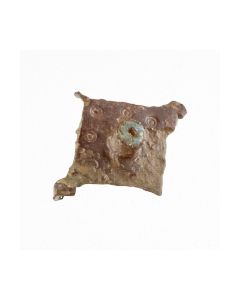 Roman fibula from the Richard Hattatt collection
Roman fibula from the Richard Hattatt collectionLozenge-shaped ancient roman fibula. The piece is published in the standard work "Iron Age and Roman Brooches". Found in Britain.
Price: on request Roman fibula from the Richard Hattatt collection
Roman fibula from the Richard Hattatt collectionLozenge-shaped ancient roman fibula. The piece is published in the standard work "Iron Age and Roman Brooches". Found in Norfolk, England.
Price: on request Roman jar, probably found in Trier area.
Roman jar, probably found in Trier area.Perfectly preserved piece from a German collection.
Price: on request Sichel aus der Bronzezeit
Sichel aus der BronzezeitBronzezeitliche Knopfsichel mit fließend geformtem Sichelrund und einer flach-konkaven Klinge. 2. Hälfte des 2. Jt. v. Chr., Europa. 100mm lang.
Price: on request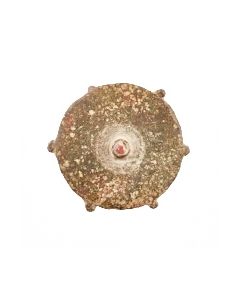 Roman plate brooch found at the Limes
Roman plate brooch found at the LimesAncient brooch with circular plate. Found near the Limes fortifications Pfoerring and Eining in Germany.
Price: on request Rare plate brooch with millefiori enamel
Rare plate brooch with millefiori enamelBrooch from Roman Imperial time, found in Roman Britain. It is an extremely rare and interesting type. The brooch is published in Richard Hattatt's standard work "Ancient Brooches and Other Artefacts" and discussed in detail.
Price: on request Neolithische Streitaxt
Neolithische StreitaxtEindrucksvolle Streitaxt der Einzelgrabkultur aus schwarz-weiß gemasertem Stein. Mittelneolithikum, ca. 3000 bis 2500 v. Chr. Perfekter Zustand. 115mm lang.
Price: on request Roman plate brooch with colourful enamel
Roman plate brooch with colourful enamelRare fibula type from Roman Britain. The fully intact multicoloured enamel makes this piece worthy of being a museum exhibit. 2nd cent. AD.
Price: on request Römische Scheibenfibel in Millefiori-Technik
Römische Scheibenfibel in Millefiori-TechnikKunstvolle Fibel aus der Kaiserzeit. Großartiges Beispiel für die antike Millefiori-Technik, die erst wieder in der Neuzeit aufgegriffen und von venezianischen Glaskünstlern zu einer neuen Blüte geführt wurde.
Price: on request Ancient brooch of a fabulous creature
Ancient brooch of a fabulous creatureRare Hippocampus brooch with elaborate inlays of multi-coloured glass paste and metal. Great example of the brooch manufacturing of Roman Gaul during the mid 1st cent. AD.
Price: on request Kompakter, dicknackiger Beilkopf
Kompakter, dicknackiger BeilkopfJungsteinzeitlicher, gedrungener Beilkopf aus schönem, rot-braunem Flintstein. 116mm lang. 3200 bis 1950 v. Chr.
Price: on request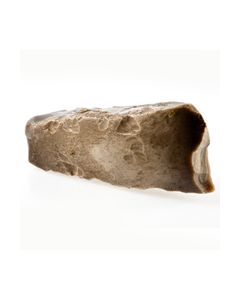 Neolithisches Valbybeil von der Insel Fünen
Neolithisches Valbybeil von der Insel FünenDicknackiger Beilkopf vom Valby-Typ aus der Ganggrabzeit. Sehr schöner, dunkler Flint. Beeindruckendes Objekt. 3200 v. Chr. bis 2800 v. Chr.
Price: on request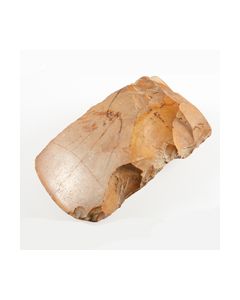 Neolithischer Beilkopf mit Nachbearbeitung
Neolithischer Beilkopf mit NachbearbeitungDünnblättriger Beilkopf vom Dicknacken-Typ mit steinzeitlicher Nachbearbeitung nach Beschädigung. Aus der Jungsteinzeit, 3200 bis 1950 v. Chr. 101mm lang.
Price: on request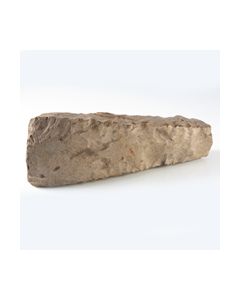 Seltenes Valby-Beil aus Danienflint
Seltenes Valby-Beil aus DanienflintDicknackiger Beilkopf eines bekannten Typs aus der Ganggrabzeit. Wunderbarer dunkler Flintstein. Beeindruckendes Objekt. 3200 v. Chr. bis 2800 v. Chr.
Price: on request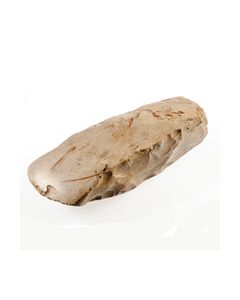 Neolithischer Dicknackenbeilkopf
Neolithischer DicknackenbeilkopfSchwerer Beilkopf vom Dicknacken-Typ. Typische neolithische Bearbeitung von hoher Präzision mit polierten Oberflächen. 3200 bis 1950 v. Chr. 124mm lang.
Price: on request Vulkanit-Beil aus Norddeutschland
Vulkanit-Beil aus NorddeutschlandNeolithischer Beilkopf aus dunkel gemasertem Vulkangestein. Ca. 3900 v. Chr. bis 3400 v. Chr., Dolmen-Periode. Fund bei Hannover.
Price: on request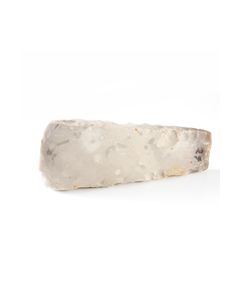 Dicknackiger Beilkopf
Dicknackiger BeilkopfNeolithisches Beil aus hellem, marmorfarbenem Flint. Dicknackiger, dünnblättriger Typ. 3200 v. Chr. bis 1950 v. Chr.
Price: on request Bronze Age axe head
Bronze Age axe headVery well preserved axe head. Late Bronze Age, 10th to 9th cent. BC.
Price: on request Bronze Age axe head
Bronze Age axe headVery well preserved axe head. Late Bronze Age, 10th to 9th cent. BC.
Price: on request Bronze Age axe head
Bronze Age axe headVery well preserved axe head. Late Bronze Age, 10th to 9th cent. BC.
Price: on request Antike Münzform für Falschgeld - Fund aus Northamptonshire
Antike Münzform für Falschgeld - Fund aus NorthamptonshireGefunden in Pitchley, UK, am 1. Januar 2008. Der Fund ist mit PAS Nummer dokumentiert und wissenschaftlich untersucht. Von außerordentlicher Seltenheit.
Price: on request Gallo-Roman animal fibula
Gallo-Roman animal fibulaZoomorphe Fibel mit Wildtier als Motiv. Schmuckstück mit religiöser Symbolik, vergleichbar einem Kreuzanhänger bei heutigen Christen. Gefertigt im 1. bis 3. Jh. n. Chr. in Gallien.
Price: on request Early Merovingian silver fibula
Early Merovingian silver fibulaMuseumswürdiges Exemplar aus dem 5. bis 6. Jh. n. Chr. Fränkischer Fibeltyp mit typischer rautenförmiger Fußplatte. Sehr kunstvoll verziert mit Vergoldung, Schmucksteinen und stilisiertem Tierkopf.
Price: on request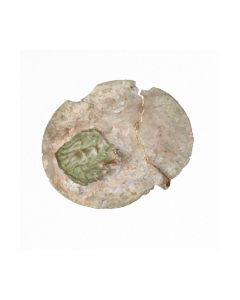 Ancient fibula from the Hattatt collection
Ancient fibula from the Hattatt collectionAncient fibula of the rare adlocutio type. Repoussé work of a scene from a Roman sestertius of Hadrian in celtic style. Find from Dorset in Roman Britain. Published in Hattatts famous book series on ancient fibulae.
Price: on request Base of a Jupiter Column
Base of a Jupiter ColumnRepeatedly published base of a Jupiter Column from the Roman province Germania superior. Mid 2nd century AD to mid 3rd century AD. With extensive provenance going back to the 17th century.
€15,000 Published Roman fibula with celtic design
Published Roman fibula with celtic designAncient fibula from the Roman province of Britain. The design can be attributed to the celtic tribe of the Trinovantes or Iceni. From the famous Hattatt collection. Published twice.
Price: on request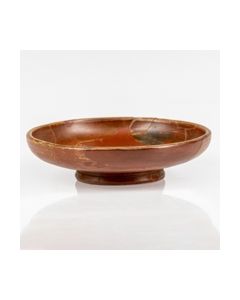 Roman Terra Sigillata bowl
Roman Terra Sigillata bowlFound in Southern Germany. From the well documented Hugo Rehorik collection.
Price: on request Two Roman jugs from the Rhineland
Two Roman jugs from the RhinelandFound 1966 till 1981 near the Roman city of Novaesium, today's Neuss in Germany. Novaesium was an early Roman foundation and with this is one of the oldest cities in Germany.
Price: on request Roman oil lamp with kissing lovers in mirror - parallel in a museum
Roman oil lamp with kissing lovers in mirror - parallel in a museumFrom the collection of Mr. Voigtmann, who had used the lamp. Moving relief in mirror, rare, possibly one of the rare original gallic motifs.
Price: on request

